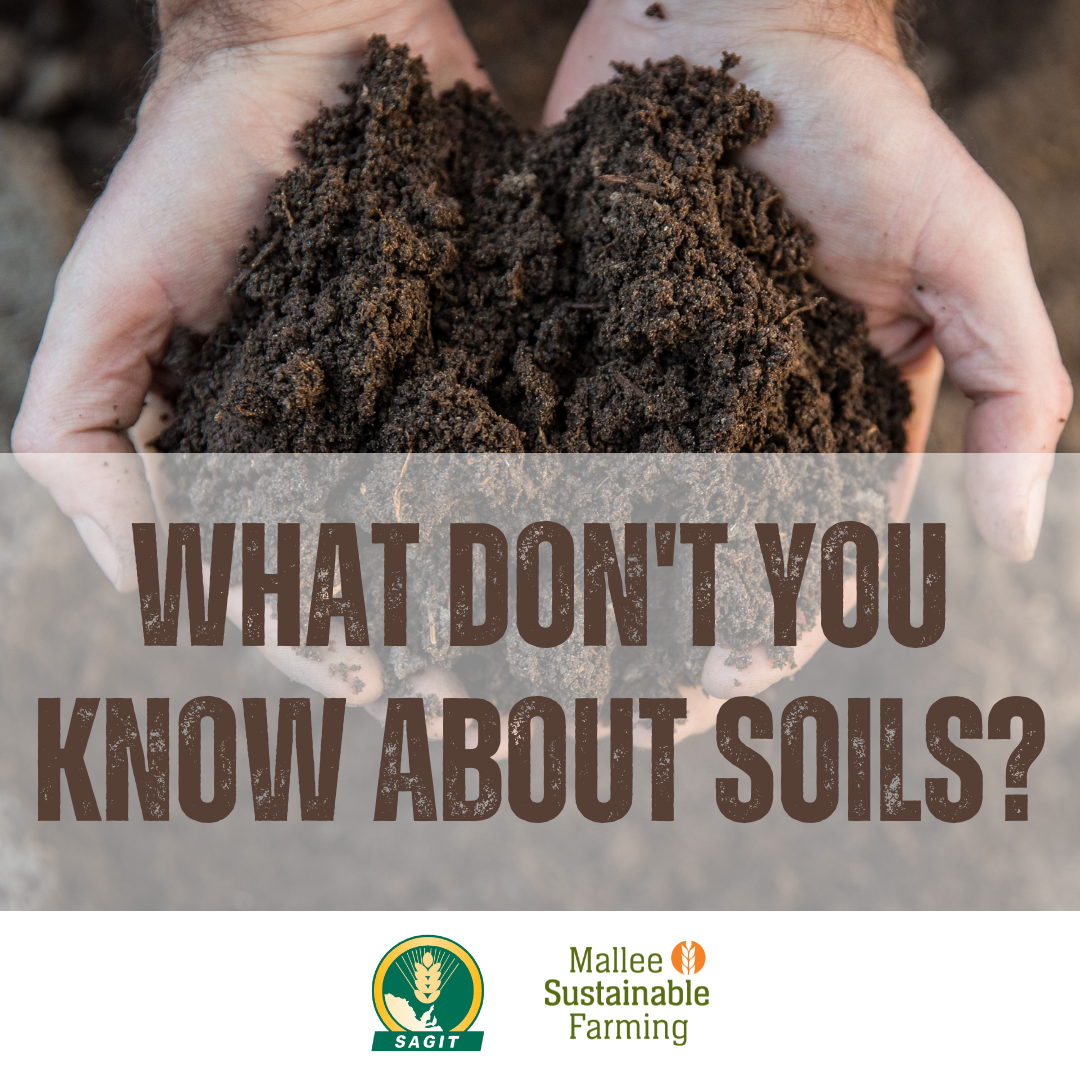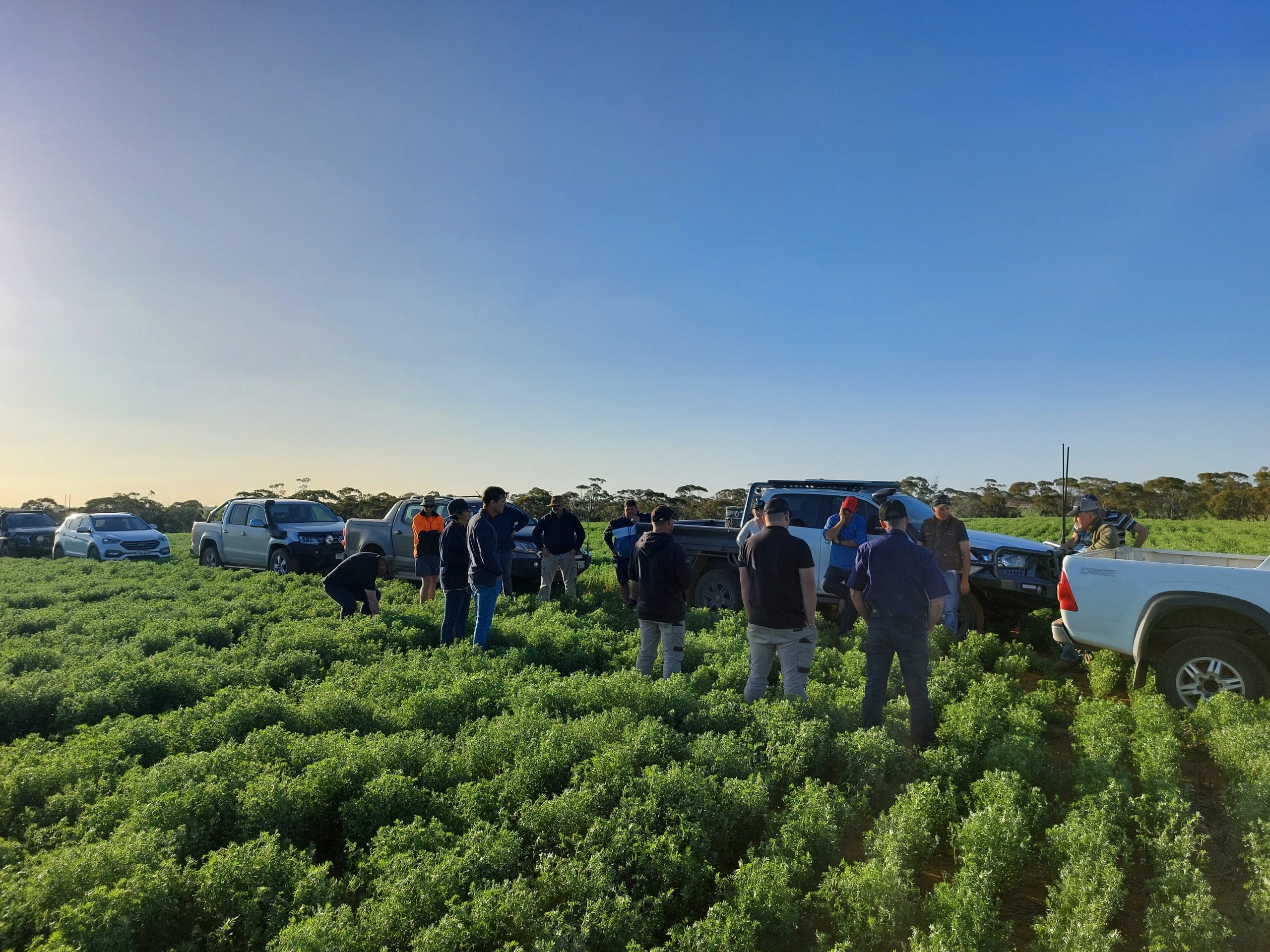Mallee Seeps
A holistic approach to seep management for preventing land degradation in the landscape.
Key objectives
Early ID of seeps using new and existing remote sensing tools
Preventing seep formation
Remediation of existing seeps
About the project
Seeps have become more evident in the last 10 years and are likely due to farming system changes coupled with very high rainfall periods. Farmers identify that poor water use on deep sands (impacted by effective summer weed control) has led to new seeps appearing in both mid-slope and swale areas below.
This project aims to tackle seep management in three ways:
Early ID of seeps using new and existing remote sensing tools to identify areas at high risk for seep formation
- Preventing seep formation – demonstrating the best high water use options for different systems
Remediation of existing seeps – categorise seeps by severity and apply the best treatment in the right area



A threat all Mallee farmers can conquer
Farmers from across the South Australian and Victorian Mallee region now face the serious threat of permanent loss of productive farming land to the scourge of seeps.
Mallee Sustainable Farming is now providing much needed support to farmers to help them tackle this problem head-on through identifying how such seeps sites can be best managed and remediated.
Here you will find valuable information for developing practical and innovative management practices arising from targeted on-farm research and demonstrations and farmer experience.
The Aim of Mallee Seeps Projects
All Mallee farmers are invited to participate in this important project, share their experiences and develop practical long-term solutions to beating seeps.
Years of experience
Identify practical strategies to reduce the impact of seeps and remediate seep-affected land through increased utilisation of soil water within paddocks
Knowledge
Create an awareness and understanding of the potential threat posed by Mallee seeps
Support
Support farmers in making informed decisions that reduce the on-going threat of seeps
Working together with Mallee Farmers is Australia’s best research and extension capability
Mallee farmers are not alone in taking on the threat of Mallee Seeps. Mallee Sustainable Farming has recruited the best in research expertise from CSIRO, Frontier Farming and the University of Adelaide in an effort to better understand why, how and where Seeps are most likely to occur.
Complementing this is exceptional extension capability and farmer linkages provided by Insight Agricultural Extension, AgriVision, Mallee CMA, Coorong-Tatiara LAP and the Murraylands and Riverlands Landscape Board, not to mention valuable inputs from Mallee farmers themselves; who are collectively developing practical solutions to remediate seep affected land to help bring it back into production.
All of these efforts would not be possible without the generous support of the National Landcare Program, the Grains Research and Development Corporation and the Murraylands and Riverland Landscapes Board.
How to install a piezometer to test salinity
A piezometer is a small bore hole used to help us define where the depth of the water table is and to collect water from depth and test the salinity to help make decisions.
The Mallee Seeps project has piezometers installed at all of our demonstration and research sites sometimes in multiple locations for example on top of sand hill, mid-slope and on the flats.
Feel free free to get in touch with our project team for more info: admin@msfp.org.au
Podcast Episodes
Working together with farmers
Other MSF Projects
Helping Farmers in the Mallee understand how to manage their Greenhouse Gas Emissions.
Our project, '101 Questions About SA Cropping Soils,' will boost farmer knowledge through easy-to-access e-publication and targeted social media Q&As.
This project funds Mallee farmers to combat wind erosion by enhancing groundcover on vulnerable soils.
Development and extension to close the economic yield gap and maximise farming systems benefits from grain legume production in South Australia.
A holistic approach to seep management for preventing land degradation in the landscape.
Strengthening Mallee Farmers and Communities for Sustainable Futures and Enhanced Resilience.
Empowering Mallee's youth to share and celebrate their stories of resilience and community through captivating social media reels
Enhancing sustainable agriculture through innovative carbon farming practices across South Australia’s Murray Mallee
We can see that harvest is on the horizon but we are not quite there yet. So what could possibly go wrong?
Supporting farmers across the Mallee to make better decisions GRDC National Risk Management Initiative (RiskWi$e)
Demonstrate how farmers can manage their own investigation of nutrition requirements when setting up VRT soil zones and fertiliser recommendations
Enhancing drought resilience and groundcover management in low-rainfall farming.
Improving Sandy Soil Management for Farmers
This project will demonstrate farmer ready management practices that break the cycle of saline land degradation exacerbated by very dry or drought conditions
MSF with the support of Australian Wool Innovation (AWI) is on a mission to close the knowledge gap around feed and nutrition in low rainfall zones.
Maximising soil amelioration efficiency and profitability in South Australian Mallee
A holistic approach to seep management for preventing land degradation in the landscape.
Demonstrating and validating the implementation of integrated weed management strategies to control barley grass in low rainfall farming systems.
Improving the production of legume crops on sandy soils to improve ground cover and reduce erosion risk
Exploring nitrogen strategies to boost crop yields in NSW Mallee region
Area wide management for cropping systems weeds, investigating the weed management, social and economic opportunity.
This project has delivered a state-of-the-art network of 30 weather stations, to the Riverland and Mallee, designed to observe localised meteorological phenomena.
This MSF led project has delivered a high work rate plough prototype in collaboration with UniSA Research Engineers and John Shearer.
Deep ripping to enhance production on Mallee Sandy Soils



























